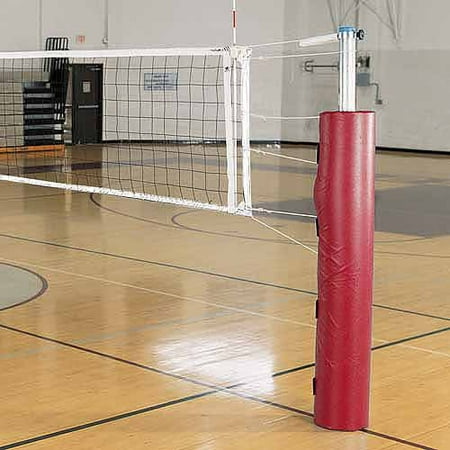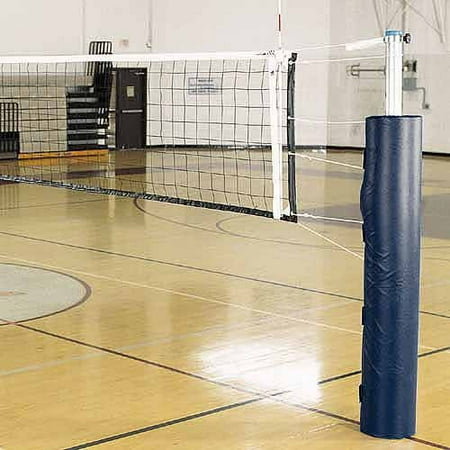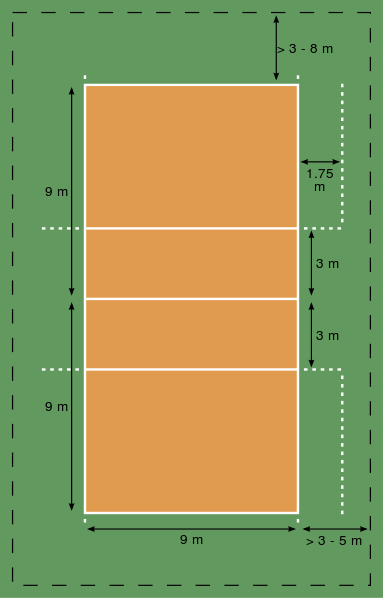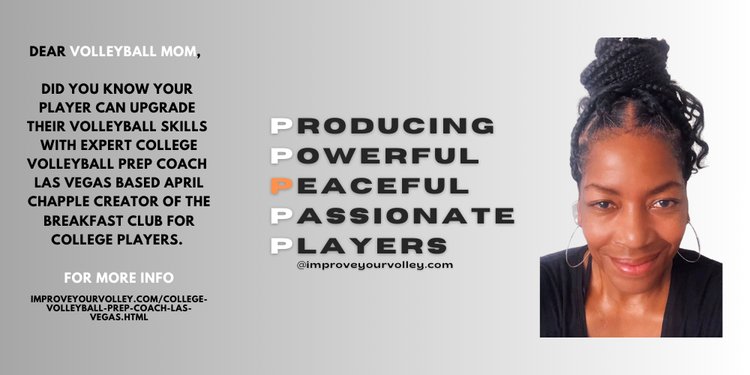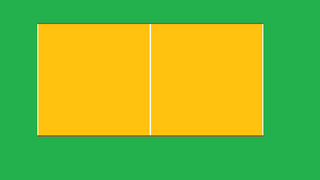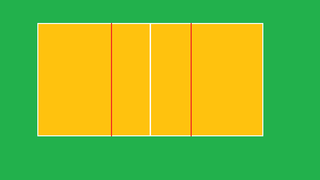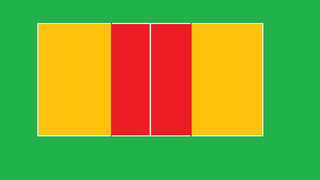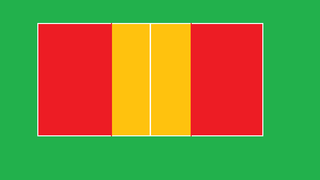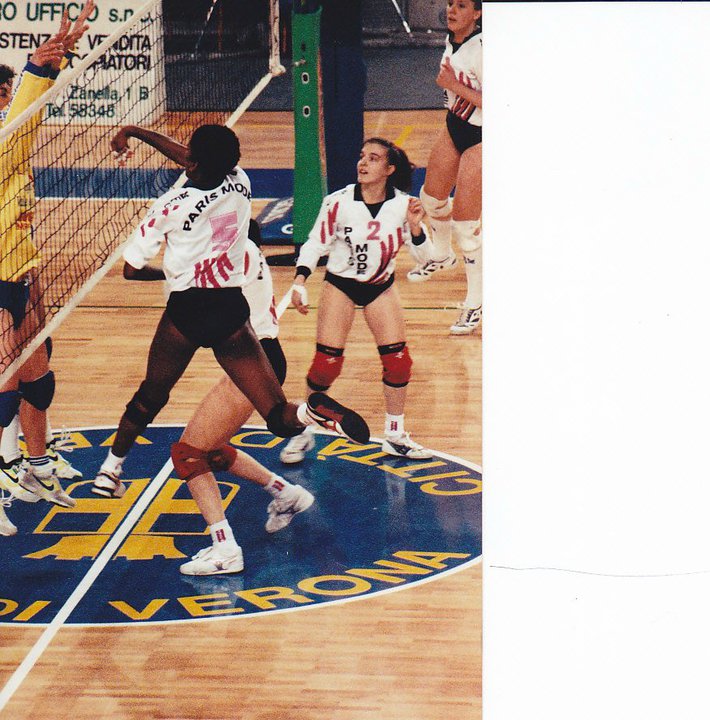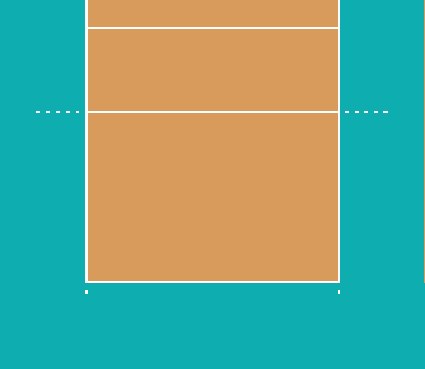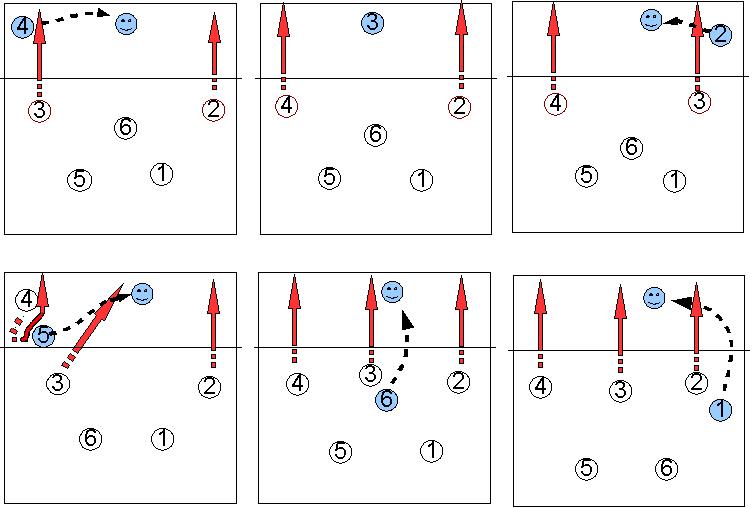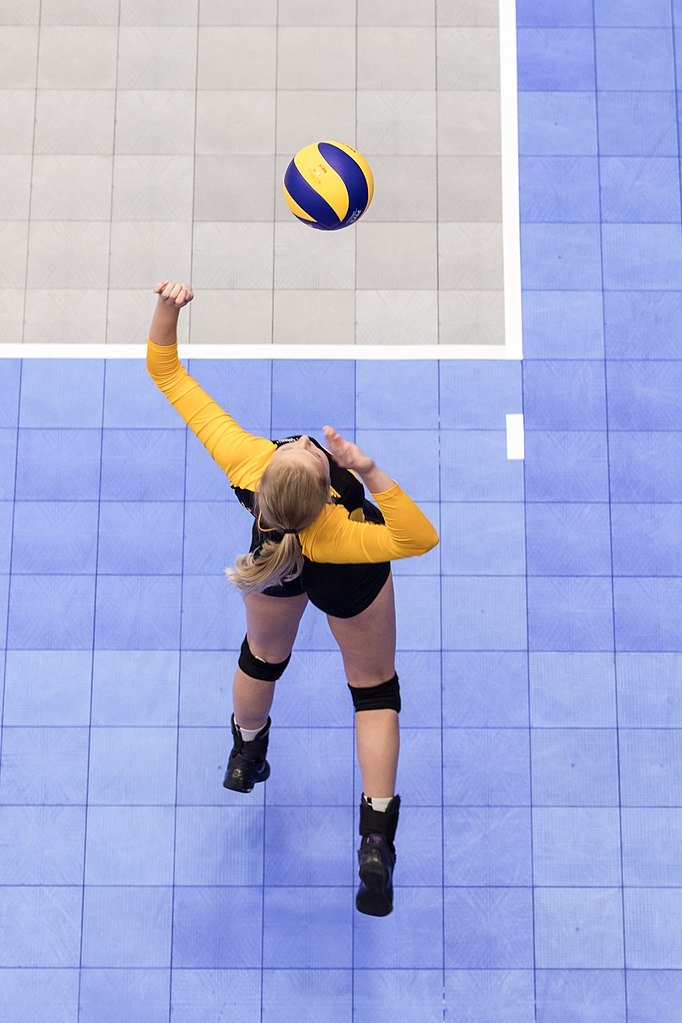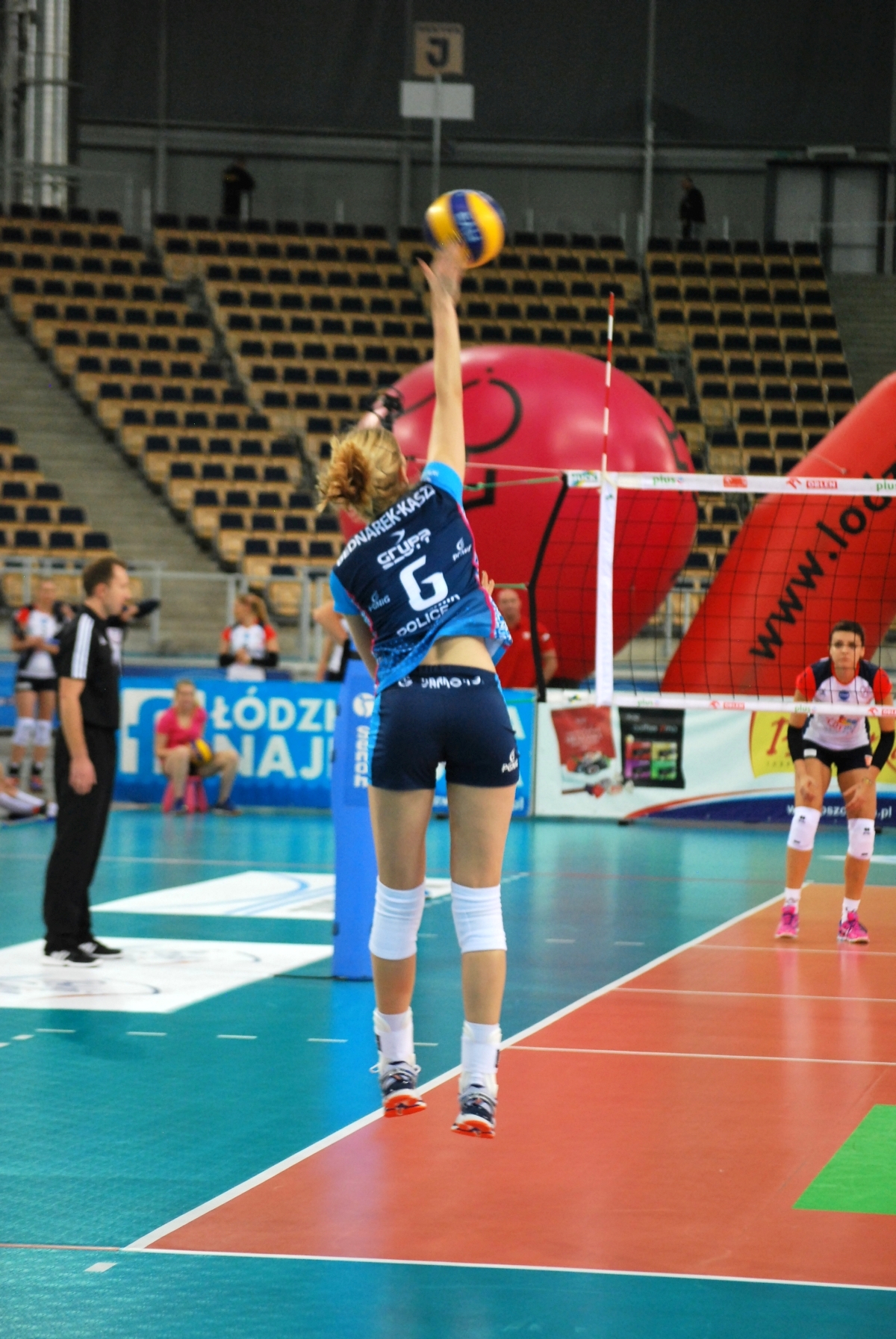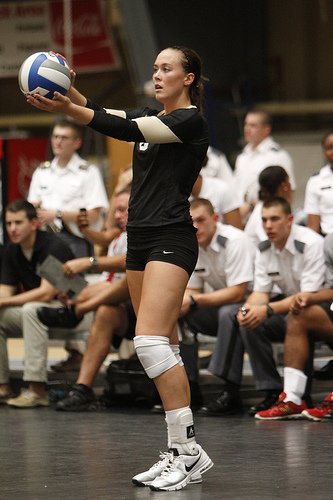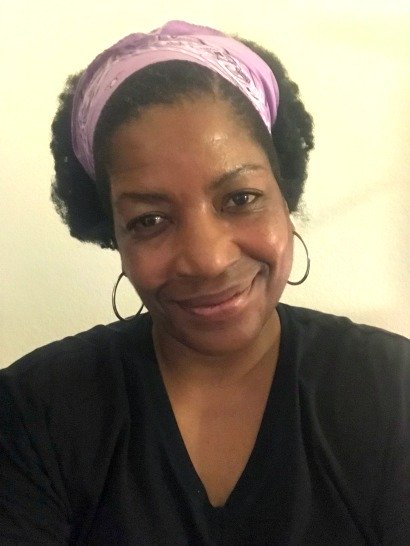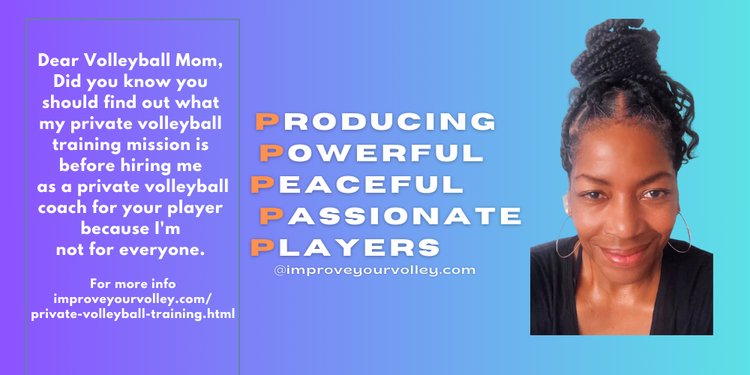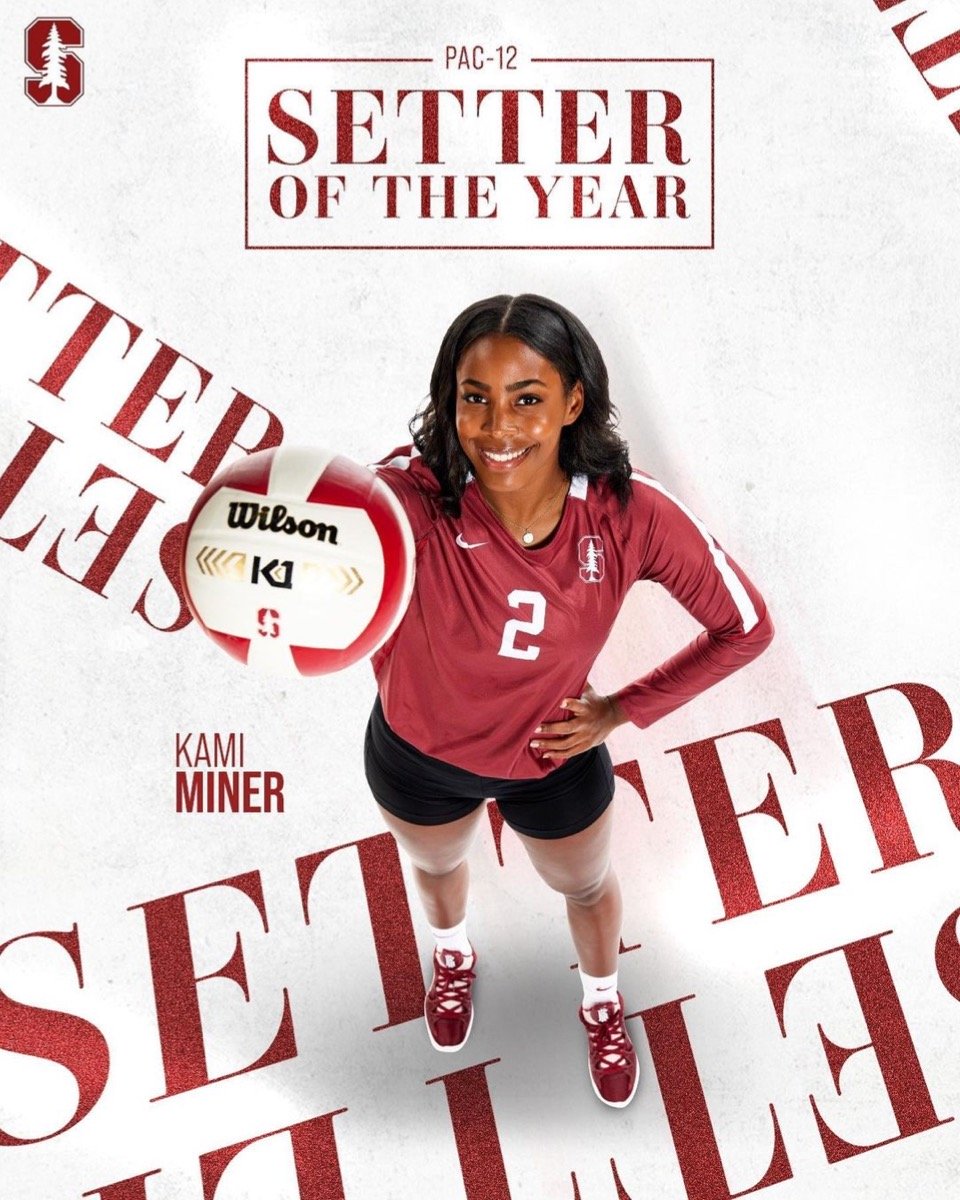- Improve Your Volleyball with Coach April
- Words Used in Volleyball
- Volleyball Court Lines
 Dear Volleyball Mom,
Do You Know What Sets My Private Volleyball Training Apart From Anyone In Vegas?
I invite You to read what my private volleyball training mission says before considering hiring me as a private volleyball coach because I'm not available for everyone.
Dear Volleyball Mom,
Do You Know What Sets My Private Volleyball Training Apart From Anyone In Vegas?
I invite You to read what my private volleyball training mission says before considering hiring me as a private volleyball coach because I'm not available for everyone.Volleyball Court Lines Create The Boundaries That Outline The Court
Volleyball court lines mark the layout of the boundaries on the official volleyball playing surface showing the play area where two teams can compete legally.
The volleyball court lines include four sidelines, two endlines, two attack lines and a centerline which outline and mark the boundaries of volleyball court playing area.
- The playing area for a court is in the shape of a large rectangle that measures 30 feet by 60 feet.
- The longest lines are the sidelines and the shortest lines of the rectangle are the endlines
- The centerline runs across the middle of the court and connects the two sidelines. It divides the large rectangle into two equal sized half courts measuring 30 feet by 30 feet.
- On each court half, there's a ten foot line which divides the half court into thirds.
- The front third of the court is called the front zone.
- It runs from the centerline to the ten foot line and is the line that front row players stay in front of when they are performing their blocking defensive skills in volleyball when their team is on defense.
- The two-thirds of the court which run from the ten foot line to the endline is called the backcourt and is where the backrow players stay when playing in defense.
If during a rally, you attack hit a ball that goes into the opposing team's court and the ball hits any part of the boundary line (sideline, endline)...that ball is considered "In" the court.
Point for your team. Serve for your team.
What Are Attack Lines?
The attack lines, also known as the three-meter lines, play a crucial role in volleyball.
Positioned approximately ten feet or three meters from the net on either side, the attack lines indicate the area where players can perform powerful attack hits or spikes.
These lines serve multiple purposes on the volleyball court.
Firstly, the attack lines act as a boundary that separates the front row players from the back row players.
In volleyball, specific rules govern the actions that players can take based on their position on the court.
Moreover, the attack lines serve as a reference point for players to determine the legality of their attack hits.
If a player makes contact with the ball while in front of or on the attack line, it is considered a violation, leading to a point or serve for the opposing team.
The attack lines help maintain fairness by ensuring that attackers do not gain an unfair advantage by attacking the ball from closer to the net.
In addition, the attack lines are crucial for referees and officials in making accurate calls during the game.
Overall, the attack lines provide a visual and physical marker on the court, creating a designated zone where players can execute powerful spikes.
They not only separate the front row and back row players but also help maintain fairness and consistency in the execution of attack hits.
What Is The Service Line?
Located approximately 10 feet or 3 meters behind the net, the service line serves as a crucial boundary that players must adhere to while serving.
It ensures that a fair and consistent distance is maintained between the server and the net.
This rule helps ensure that players do not have an unfair advantage by serving closer to the net.
The service line acts as a reference point for players to judge the accuracy and legality of their serves.
Addi puts in 100 reps to improve her technique for her floater in volleyball serve on Super Bowl Sunday.
And guess what? The service line plays a role in the positioning of the receiving team.
This positioning allows the receiving team to have enough reaction time and space to receive the ball and control the serve.
Being able to understand the boundaries that the service line creates, is important for players to properly perform their serves and to ensure fair play.
The service line ensures that serves are made from an appropriate distance on both sides of the court, in order to promote fair competition and skillful gameplay.
Consider the service line as a parallel boundary line to the net that indicates the precise position from where players serve the ball.
It enforces a fair distance between the server and the net, helps players judge the accuracy of their serves, and establishes the positioning of the receiving team.
By sticking to and acknowledging the boundaries set by the service line, players can serve and contribute to the success of their team while participating in a competitive volleyball match.
My Recommendations for Essential Court Line Equipment for Practice and Competition
As a volleyball coach and former professional player, I know the importance of properly marked court boundaries.
Whether you're setting up a practice court or organizing a tournament, having the right court line equipment is crucial for proper training and game play.
1. Permanent Court Line Solutions
($200-500)
"For indoor facilities and permanent courts:"
Whether you're setting up a practice court or organizing a tournament, having the right court line equipment is crucial for proper training and game play.
* Professional-grade adhesive
* Non-scuff design
* Multiple color options
* Easy installation/removal
Premium Choice:
- 3M Volleyball Court Line Marking Kit
* Professional-grade adhesive tape
* 2-inch regulation width
* Non-damaging removal system
* Complete with measuring guides
* Price Range: $199-249
Mid-Range Option:
- Court Marking Tape Pro Series
* 100-foot rolls
* Multiple color options
* Indoor-specific adhesive
* Installation tools included
* Price Range: $149-179
Budget-Friendly:
* Standard width marking tape
* Basic installation tools
* Suitable for temporary setups
* Price Range: $89-119
2. Portable Boundary Systems ($50-150)
"Perfect for multi-purpose spaces and outdoor courts:"
- Adjustable Court Line Kits
* Quick setup design
* High visibility straps
* Includes corner anchors
* Weather-resistant materials
Premium Choice:
* Professional-grade straps
* Heavy-duty stakes
* Quick-adjust corners
* Carrying case included
* Price Range: $129-149
Mid-Range Option:
- Franklin Sports Premium Court Lines
* Weather-resistant material
* Universal anchor system
* High visibility design
* Storage bag included
* Price Range: $79-99
Budget-Friendly:
- Champion Sports Boundary Kit
* Basic strap system
* Standard stakes
* Easy setup design
* Price Range: $49-69
3. Training Line Markers ($30-80)
"Ideal for practice sessions and skill development:"
* 10-foot line markers
* Service line indicators
* Position training markers
* Storage bag included
Premium Choice:
* 24-piece marker set
* Attack line indicators
* Position training dots
* Non-slip design
* Price Range: $69-89
Mid-Range Option:
* 16-piece set
* Multiple colors
* Storage container
* Price Range: $49-59
Budget-Friendly:
* 12-piece basic set
* Basic position markers
* Carrying bag
* Price Range: $29-39
My Pro Coach Tip:
When selecting court line equipment, remember to consider:
- Surface type (wood, sand, grass)
- Frequency of setup/breakdown
- Storage requirements
- Weather exposure (for outdoor use)
- Visibility needs
Volleyball Court Line Systems COMPARISON CHART
|
Feature Comparison Initial Cost Installation Time Durability Best Used For Setup Difficulty Storage Needed Weather Resistant Professional Look Portability Maintenance |
Permanent Systems $150-500 2-3 hours 1-2 years School Gyms Sports Centers Fixed Courts High Minimal Indoor Only ***** None Low |
Portable Systems $50-150 15-30 mins 6-12 months Multi-use Spaces Beach Courts Outdoor Setups Medium Medium Yes **** High Medium |
Training Markers $30-90 5-10 mins 3-6 months Practice Sessions Skills Training Youth Programs Low Small Varies *** Very High Low |
Detailed Feature Breakdown
Installation Requirements:
- Permanent: Professional installation recommended - - Portable: 1-2 person setup - Training: Single person setup
Maintenance Needs:
- Permanent: Annual inspection/touch-up
- Portable: Monthly checking of straps/anchors
- Training: Regular cleaning/replacement
Surface Compatibility:
- Permanent: Wood, Sport Court
- Portable: All surfaces
- Training: Any flat surface
Investment Value:
- Permanent: Best long-term value
- Portable: Best versatility value
- Training: Best entry-level value
Maintenance & Installation Guide
Volleyball Court Line System Care Guide
PERMANENT SYSTEMS INSTALLATION
Before Installation:
- Clean floor thoroughly (24 hours before)
- Measure court dimensions twice
- Mark reference points
- Gather necessary tools:
* Measuring tape
* Chalk line
* Floor cleaner
* Installation roller
* Utility knife
Installation Steps:
1. Map court layout using chalk lines
2. Test tape adhesion in small area
3. Apply tape in sections (10-15 feet at a time)
4. Roll firmly to ensure adhesion
5. Cut corners at 45-degree angles
6. Allow 24 hours before use
PORTABLE SYSTEM SETUP
Pre-Setup Checklist:
- Clear area of debris
- Check all straps and anchors
- Verify surface conditions
- Required tools:
* Measuring tape
* Hammer (for stakes)
* Corner markers
* Level (optional)
Setup Process:
1. Lay out corner markers
2. Install main boundary lines
3. Secure anchors/stakes
4. Adjust for tension
5. Verify measurements
6. Test line stability
MAINTENANCE GUIDELINES
Daily/Weekly Care:
- Remove debris from lines
- Check for loose sections
- Clean visible marks
- Verify anchor security
Monthly Maintenance:
- Deep clean lines
- Inspect for wear
- Test anchor points
- Check measurement accuracy
Seasonal Care:
- Complete system inspection
- Replace damaged components
- Deep cleaning
- Re-secure loose sections
STORAGE RECOMMENDATIONS
Permanent Systems:
- Keep spare tape sections
- Store adhesive in climate-controlled area
- Maintain installation tools
Portable Systems:
- Clean before storage
- Roll straps without kinks
- Store in dry location
- Keep stakes/anchors together
- Use provided storage bags
TROUBLESHOOTING TIPS
Common Issues & Solutions:
1. Lifting Tape
- Clean surface
- Apply pressure
- Replace section if needed
2. Loose Anchors
- Check ground condition
- Replace if damaged
- Use larger stakes
3. Faded Lines
- Clean thoroughly
- Consider replacement
- Use UV-resistant products
4. Uneven Tension
- Readjust corner anchors
- Check for obstacles
- Verify measurements
Do You Follow Me on Pinterest?
Follow me on Pinterest Volleybragswag to improve your game even faster!
I share alot of individual, partner and easy-to-do volleyball serving drills we do in class with my followers.
Many of these volleyball practice drills you can do at home by yourself or try at your next practice with your teammates.
If you're a B team or JV player trying to make varsity next year...your goal should be to complete 1000 reps a day of at least three of the basic skills on your own...volleyball passing, serving and setting should be at the top of the list.
Volleyball Court Lines:
Where Do You Go From Here?
Good times! Where do you need to go now? Here are three options:
- Learn more about the Volleyball Court Lines.
- Follow the suggested reading on our Sitemap page Learning How To Play (Sitemap)
- Or visit the pages in the Volleyball Rules section in the drop down menu at the top of the page.
SUSCRIBE
To My Email Newsletter Below!
From Lady Vol to Legend: Coach April Produces Powerful Passionate Players...is that you?
What Are You Looking For?

Hi there!
Thanks for stopping by. Hope you learned something today that will help you reach your volleyball goals.
Be sure to subscribe to my email newsletter so you can learn more each week!
Stay strong! Stay motivated!
-Coach April

SUSCRIBE
to my email newsletter below!
Vegas Volleyball's Unsung Heroes: Celebrating Moms with Peace Love Volleyball Shirts
Ready to energize your volleyball mom journey?
Subscribe to my 'Producing Powerful Passionate Peaceful Players' email list above on ImproveYourVolley.com.
You'll receive energy-boosting tips, exclusive insights from me, Coach April Chapple on maintaining momentum in volleyball.
Let's power up the Vegas volleyball scene together!
Recent Articles
-
Volleyball Partner Passing Drills You Can Do To Improve Ball Control
Apr 21, 25 12:42 AM
These volleyball partner passing drills we do in Boot Camp classes are drills you can do at home in order to improve your consistency and ball control skills. -
The Volleyball Pepper Drill: Partner and Three Player Pepper Drills
Apr 19, 25 02:04 PM
The volleyball pepper drill is a ball control drill using setting, digging and hitting skills usually done as a partner or three player person drill in warmup. -
Best Volleyball Drills For Setters, Hitters, Liberos, Passers Blockers
Apr 19, 25 04:08 AM
Best volleyball drills are essential exercises in the learning process for players to improve your serving, hitting, passing, spiking, setting, blocking skills.
Bestselling
Volleyball Nets
on Sale!


